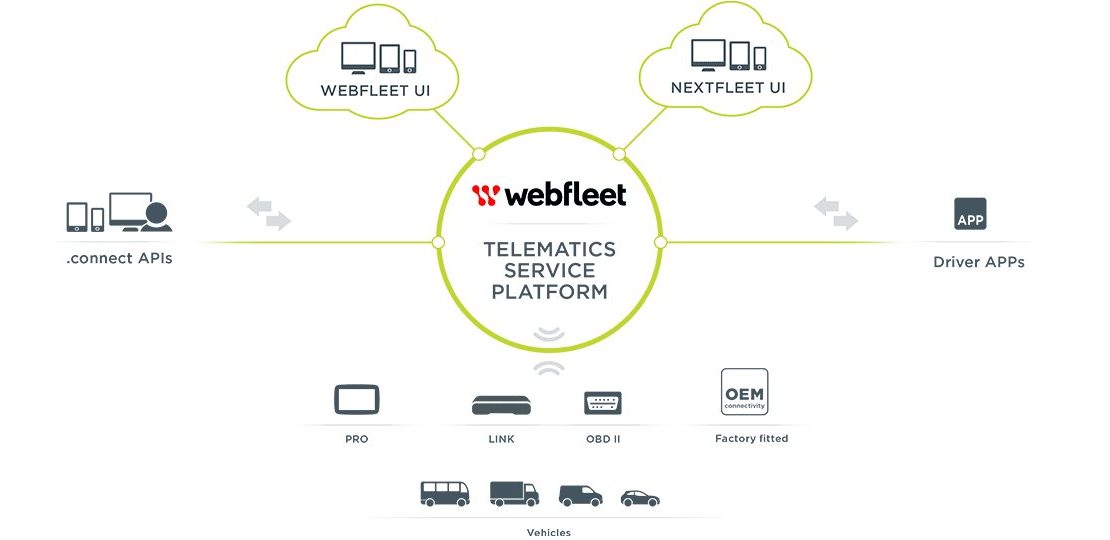The Five Ways to Have a Connected Telematics System
- 20/10/2021
- Posted by: Simplicity Group
- Category: General

1 – API – what could these important letters mean for you?
API means Application Protocol Interface. An API connects different software together such as telematics systems and software. An example of this might be Microsoft Dynamics, working as a job management system, and WEBFLEET.
Microsoft Dynamics can dynamically schedule your workload and feed it through an API to WEBFLEET and directly to the driver/vehicle. There are several software systems that can perform this functionality, but the key point is that an API can connect any software systems.
2 – Connecting your business systems to your telematics with API
Keeping in mind the point above almost all software now comes with an API. This means the software you use to run your business can now be enhanced to communicate with telematics software. When this happens with WEBFLEET the key outcomes are:
- ETA’s of when the vehicle will arrive at the destination.
- Informing your clients of the ETA of your vehicle.
- Updating your software that each job has been completed.
3 – Pushing and Pulling Data – The API Jargon you need to know
Pushing Data
This means that you can take all of the key data associated with any orders and push it to the telematics platform. This might be data such as:
- Date
- Time
- Destination/delivery address
- Job or delivery details.
Pulling Data
As telematics data can go in two ways through the API you might also wish to pull some data to monitor performance. This might be for different purposes such as jobs completed on time or delivery performance metrics. As insurance is also playing such a key part in telematics now the data that can be pulled might be:
- Speeding
- Driving Events
- Idle time
- Wasted fuel
- Fuel Consumption
- Utilization of vehicles
- Driver scoring (OptiDrive)
- Orders on Time
- % of orders on time
- Job completed to update third party software.
4 – Use Connected Telematics to put more drivers on the road
We live in times of severe driver shortages. Organizations with multiple people in Traffic offices might be better to use these employees as drivers by automating software systems. Only recently UK Government Ministers were urging the Haulage sector to automate as a workaround to the driver shortage. This is where using an API comes into play.
There is generally a cost for a software specialist to connect systems. However this is small in comparison to the labour savings that can be achieved. Traffic Offices with four people might easily become an office with a team of two. This might make available two additional people for driving. S
5 – How else might APIs and connected telematics pay for itself?
Some potential outcomes to using an API in the future could be:
- Electronic scheduling instead of manual scheduling on paper or Excel.
- Data being sent directly to drivers instead of them visiting the premises to collect it.
- Visible ETA’s for each vehicle.
- Clarity on how many jobs are completed each day.
- Data from telematics being used to update scheduling/third party software.
- Instant invoicing through utilisising this data to improve cash flow and reduce debtor days.
- No more lost delivery notes as they are sent swiftly and automatically at point of delivery.
More and more organizations are using technology to automate and streamline the business. Is your business in danger of being left behind? Speak to us to find out what might be available to your business.
Click here to book a short meeting for an initial discussion.


